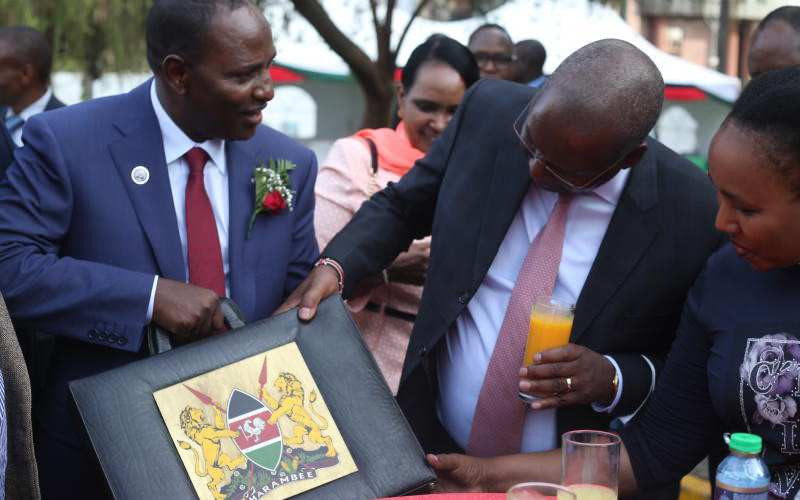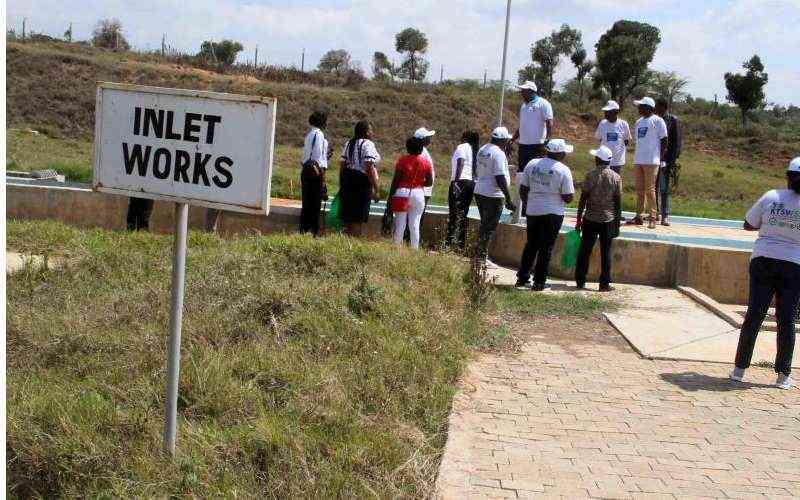
Public Sector Hearings on the 2023/24 and medium-term budget are being held this week.
These hearings cover nine out of 10 MTEF sectors into which the national government is organized for budget purposes.
Every ministry, department or agency (MDA) falls into a specific sector.
In the order of the week's programme of hearings, these sectors are Agricultural, Rural and Urban Development; Health; Education; Energy, Infrastructure and ICT; General Economic and Commercial Affairs; Governance, Justice, Law and Order; Environment Protection, Water and Natural Resources; Public Administration and International Relations and Social Protection, Culture and Recreation. National Security does not prepare a report for public participation.
Despite the typically short public participation notice by the National Treasury, these hearings were supposed to offer an opportunity for the public to participate in budget-making by providing input to sectors on their strategic priorities and resource bids in the context of Treasury's constrained resource envelope.
They are also happening at a time when Kenyans are anxious for the Kenya Kwanza administration to translate its multiple promises into action, and then results.
The context for these hearings is appropriate, given the recent senior government retreat to Nanyuki which reportedly concluded with each ministry/sector/cluster outlining implementation priorities (presumably for both calendar and fiscal 2023), milestones, timelines and funding needs.
Rubber meets the road
The hearings offer the first opportunity for the rubber to meet the road on Kenya Kwanza's plans. Indeed, it will be fascinating to triangulate what conclusions the hearings might come to on Friday.
On the one hand, we have retreat conclusions and the question of how they are reflected in the sector priorities being presented to the public this week.
This is because the sector reports being presented to the public were prepared - by sector secretariats comprising technical and budget officers - last December, before the retreat.
In reverse, therefore, which priorities in these sector reports are being dropped to sync with the presumably updated priorities from the retreat?
The third angle brings it all together from the indicative resourcing picture presented in my previous article.
To recall, the total sector ceiling accorded by Treasury was Sh2.2 trillion. Sector resource bids based on the reports prepared before the retreat currently total Sh4.0 trillion, almost 80 per cent above availability.
Bigger picture lense
So, here's the multifaceted question. How does each sector plan to swap new initiatives (from the retreat) with existing initiatives (in the report), in a way that keeps the total resource need within the Sh2.2 trillion resource availability that Treasury cannot increase?
These are the broader and higher-level questions that should be pervading these three-day hearings.
There are pros and cons to the format of a hearing that allows sector-by-sector reviews. It is a positive, as the public and stakeholders are not necessarily interested in all sectors.
The negative is that there is no "big picture" lens in the way the information is presented and discussed (indeed, calculating the total sector resource bid required this writer to review all nine sector reports). It is not unreasonable to conclude that there is an official preference for smaller pictures.
So as the hearings proceed, the rest of this article offers five "big picture" perspectives (again from review of all nine sector reports) to the KICC discourse currently taking place. These perspectives point to important questions for Kenyans as we begin to understand the real Kenya Kwanza action plan. We will treat them as a baseline of conversations that might have underpinned the hearings.

The first perspective goes to the heart of the budget.
Is our current budget picture (expenditure mix between sectors) still "fit for purpose"? Based on Treasury's BROP ceilings, agriculture is allocated three per cent of the national ministerial budget (Sh2.2 trillion), education is allotted 26 per cent, health gets seven per cent, environment protection five per cent and social protection seven per cent.
Even allowing for devolution, and outside of education's mighty share, that is 18 per cent on the basics. After accounting for education, that leaves 20 per cent for infrastructure and trade, 26 per cent for governance and administration and 10 per cent for national security.
Before we get to Maputo/Malabo's 10 per cent commitment for agriculture, or Abuja's 15 per cent commitment for health (again, accepting that both are also devolved). When will we have this first conversation?
The next two perspectives are about pictures of today. If you have been following Kenya Kwanza keenly, their perpetual messaging is "yesterday bad; tomorrow good". This is not news. Indeed, it's not only the way we (as others) do politics, but by personal observation, it's also the way we tend to do strategy in this country. We love context (the result of history) but we dislike baselines (the picture of today). This is probably why we aren't quite hearing about the picture of tomorrow.
What happens when you don't have a picture of today? You end up with three messages. Pleas for more time to deliver. Fresh promises with tight timelines. Endless "rear view mirror" language.
The sector reports that are the basis of these hearings are a case in point. Because a clear picture of today is not articulated, results are measured by completed activities (x people trained), rather than outcomes (poverty reduced, jobs created). One hopes that the recent top honcho retreat fixed this - if not at outcome - at least at output level (service usage, product uptake).
Pending bills
This doesn't mean there are no pictures of today in the sector reports. The first one is pending bills. Treasury data at the end of September 2022 showed national-level pending bills at Sh440 billion, of which Sh82 billion applied to national government MDAs and the rest to parastatals (whose public funding comes from MDAs). We shall ignore for now end-September Sh160 billion in county pending bills that will probably need a bailout from national government (whether you call it added allocation or county support) if they are to do any service delivery and development.
The sector reports - to end-June 2022 - offer a more fascinating insight. The sum total across all sectors is Sh346 billion (presumably including a few, but not all parastatals). But here's the real picture of today; Sh55 billion (16 per cent) of this total is due to "lack of exchequer" (it's in the budget but there's no cash to pay) and Sh291 billion (84 per cent) is due to "lack of budget" (it's not in the budget). Put it simply. Lack of budget is a discipline issue that needs a conversation. The more obvious conversation required is what these bills mean for our giant spending budget.
The second one is just as incongruous. We have a relatively recent item in sector reports around court awards (for concluded not ongoing cases or appeals). Across the sectors, the amount determined was Sh166 billion at the end of June 2022, of which Sh34 billion had been paid, leaving Sh132 billion outstanding. As we scream "rule of law", there is another budget conversation here.
The final two perspectives, briefly, are about programmes and projects. Do the sector reports demonstrate any structural shifts in programmes in 2023/24? Not really. The total number of programmes across sectors increases from 156 to 165, but outcomes on which they are based remain mostly the same, as does the scope of sub-programmes. Basically, we haven't really changed the vehicle (programmes) but we want to reach our destination faster. But of course, the big retreat happened, so we probably have a fruitful fourth conversation in front of us.
Four out of every ten projects are in energy
Kenya's current budgeting logic is such that you cannot have a project that doesn't fall under a programme. This reflects the US-style programme-based budgeting system we established in our PFM law about five minutes after we got our new constitution. So we expect that all projects, old and new, have been assigned to a programme by now. That's one part of this last conversation.
But here's the real one. Across all sectors, the 2021/22 project portfolio count comes in at 2,133 projects; with four out of every ten in Energy, Infrastructure and ICT, another two across the Agriculture and Environmental Protection sectors.
A quick review shows that 601 of these projects are at 100 per cent completion, with 1,532 carried forward into the current 2022/23 financial year. Which naturally leads us into the final conversation. As new projects are concocted, is project rationalization complete? As with the question at the beginning on budget space, do we now have a project space that brings new Kenya Kwanza projects into a viable project portfolio?
Probably no answers at the hearings, but some conversations we need as the rubber meets the road.
 The Standard Group Plc is a multi-media organization with investments in media platforms spanning newspaper print
operations, television, radio broadcasting, digital and online services. The Standard Group is recognized as a
leading multi-media house in Kenya with a key influence in matters of national and international interest.
The Standard Group Plc is a multi-media organization with investments in media platforms spanning newspaper print
operations, television, radio broadcasting, digital and online services. The Standard Group is recognized as a
leading multi-media house in Kenya with a key influence in matters of national and international interest.











